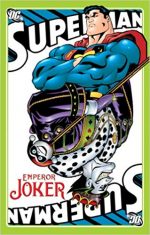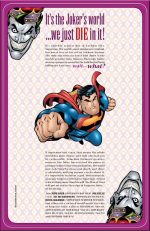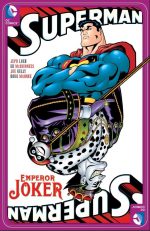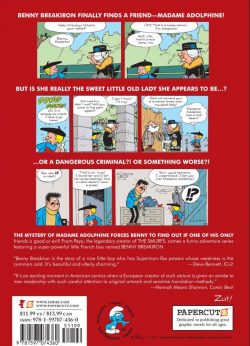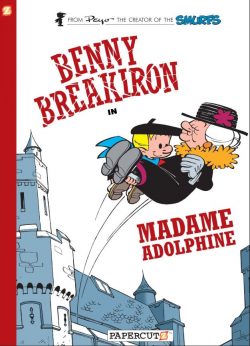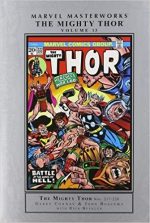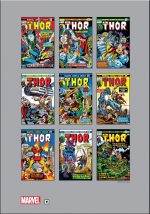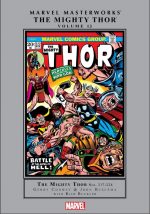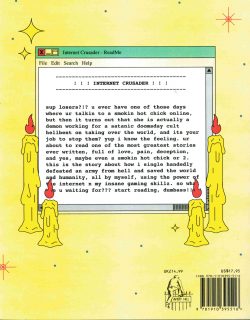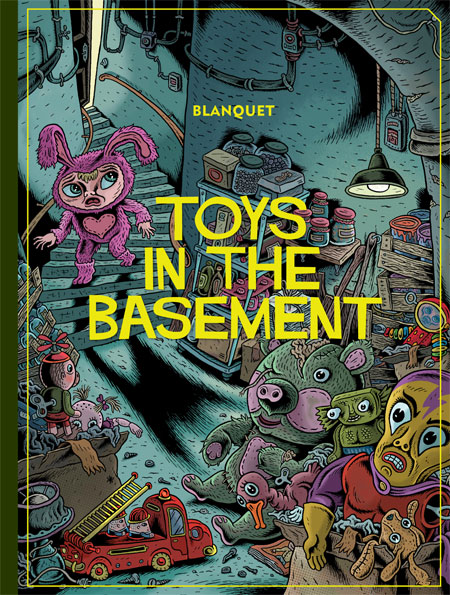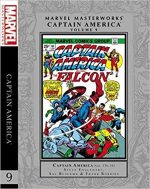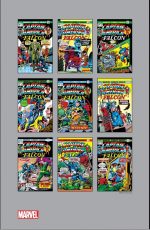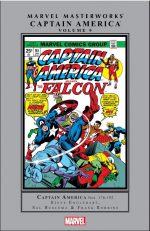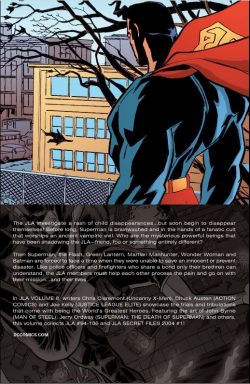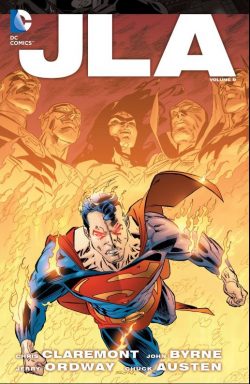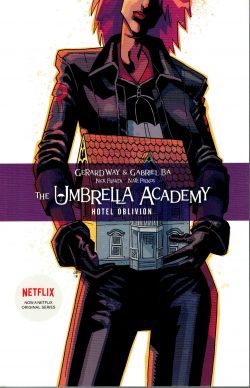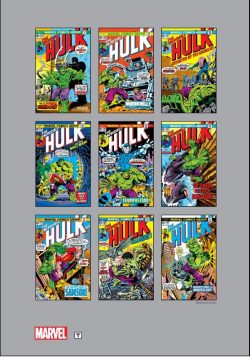
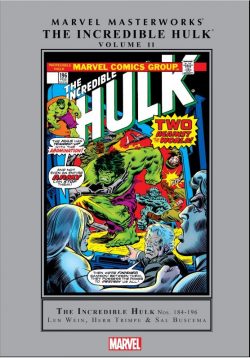
By Len Wein, Herb Trimpe & Sal Buscema & various (Marvel)
ISBN: 978-1-3029-0349-7 (HB)
During the 1970s, the Incredible Hulk settled into a comfortable – if cathartically destructive – pattern. A globe-trotting, monster-mashing plot formula saw tragic physicist Bruce Banner perpetually running and hiding whilst seeking cures for his gamma-transformative curse, alternately aided or hunted by prospective father-in-law General Thaddeus “Thunderbolt†Ross and his daughter – unobtainable inamorata Betty – with a non-stop procession of guest-star heroes and villains providing the battle du jour.
Herb Trimpe had made the character his own, displaying a penchant for explosive action and an unparalleled facility for drawing technology – especially honking great ordnance and vehicles. Beginning with Roy Thomas – unofficial custodian of Marvel’s burgeoning shared-universe continuity – a string of skilful scripters effectively played the afflicted Jekyll/Hyde card for maximum angst and ironic heartbreak as the Jade Juggernaut became a sturdy pillar of Marvel’s growing pantheon.
This chronologically-curated hardback and eBook compendium re-presents issues #184-196 (encompassing cover-dates February 1975-February 1976) and opens with author Dewey Cassell reviewing the end of an artistic era in his Introduction…
The action commences with ‘Shadow on the Land!’ by Len Wein & Trimpe, which finds the wandering man-mountain battling insubstantial extraterrestrial invader Warlord Kaa – a revival from the company’s pre-superhero monsters & aliens anthology era – who foolishly takes possession of the Hulk’s shadow and thinks himself indestructible…
This close encounter leads to Banner’s capture by Hulkbuster Base commander Colonel Armbruster just in time for the US President’s visit and a shocking ‘Deathknell!’ as the truth about Banner’s love rival Glenn Talbot (and Betty’s new husband) is revealed when the so-trustworthy major attempts to assassinate the Commander-in-Chief.
During the attendant death and chaos, Hulk busts out and General Ross regains his shattered credibility by recapturing the man-beast, but Soviet infiltration of the base is rife as a cunning traitor dons super-armour to continue the deadly attacks in ‘The Day of the Devastator!’
This time, when the Jade Juggernaut smashes their common foe, the American army are suitably grateful…
Sometime later, SHIELD intelligence gathers discover the real Talbot is a prisoner in Siberia and that Hulkbuster Base’s current problems have been caused by a Soviet mutant genius they’ve all battled before…
‘There’s a Gremlin in the Works!’ (Incredible Hulk #187, with Joe Staton joining the team as inker) features the return of the son of the Green Goliath’s very first foe The Gargoyle – a vicious juvenile mastermind with plans far beyond merely serving the Soviet state.
The little maniac is holding Talbot at his Bitterfrost fortress and fully prepared for Ross and SHIELD agent Clay Quartermain to stage a rescue bid, but all the cyborg super-soldiers and giant mutant monster dogs in the world are not enough when mission stowaway Bruce Banner gets scared and goes green…
The Russian fiend’s personality-altering technology is exposed in ‘Mind Over Mayhem!’, but as the heroes desperately flee the base with Talbot’s comatose body, Hulk seemingly dies in Bitterfrost’s explosive death-throes. Nothing could be further from the truth and #189 sees the monster battle the Mole Man to secure a miracle-remedy for a sightless little Russian girl in ‘None Are So Blind…!’
Veteran Hulk illustrator Marie Severin inks Trimpe on ‘The Man Who Came Down on a Rainbow!’ as alien philanthropist Glorian whisks the solitary man-monster to a veritable promised land in the stars, only to have the idyll shattered by invading Toad Men hungry for the secret power fuelling the ready-made paradise…
After murdering Glorian, ‘The Triumph of the Toad!’ (Trimpe & Staton) is short-lived and catastrophically self-destructive after the enraged Hulk and the cosmically divine Shaper of Worlds extract a measure of justice for their fallen friend…
Unwillingly banished back to Earth, the Green Giant lands in Scotland in time to get between feuding hotheads with violently opposing attitudes to ‘The Lurker beneath Loch Fear!’! after which Banner makes his way to America where Ross and Quartermain have recruited a famous psychologist to fix the catatonic Glenn Talbot…
‘The Doctor’s Name is… Samson!’ finds the formerly Gamma-powered psychiatrist falling victim to another scientific gaffe and accidentally reborn as a green-haired superhero, yet still unable to cure his patient. For that he needs Banner, but when this wish comes true, Leonard Samson just isn’t tough enough to hold onto him…
After almost a decade pencilling the strip Trimpe moved on to other things and Incredible Hulk #194 saw Sal Buscema take over in ‘The Day of the Locust!’ (with Wein & Staton still doing what they did best).
Lost in the American heartland, the Hulk stumbles upon young lovers pursued by an overly possessive dad determined to end the affair. However, this angry, overreaching parent is a former X-Men adversary who can enlarge insects to immense size, so the kids are more than grateful for the assistance of a Jolly Green Cupid…
With Samson and the US army one step behind him, the Hulk then befriends a small boy running away from home in ‘Warfare in Wonderland!’ Eager for any advantage, Ross tricks gamma-powered maniac the Abomination into attacking the Jade Giant but is unprepared for the green gladiators to team up rather than tussle in #196’s ‘The Abomination Proclamation!’
Sadly, the villain’s innate viciousness quickly alienates his temporary ally and, after winning another spectacular fight, Hulk blasts off on a runaway rocket and is apparently atomised when it blows up…
To Be Continued?
This fast and furious fun-filled tome also includes the covers from and some interior pages from Hulk-themed Marvel Treasury Edition #5, crafted by John Romita, Marie Severin and Trimpe, as well as the latter’s double page pin-up of Hulk foes from that tabloid-sized graphic treat, as well as house ads, the cover to Giant-Size Hulk #1 and a gallery of original art including unused Trimpe covers.
And gilding that bunch of viridian lilies is Sal Buscema’s 1960s try-out art page…
The Incredible Hulk is one of the most well-known comic characters on Earth, and these stories, as much as the movies, cartoons, TV shows, games, toys and action figures are the reason why. For an uncomplicated, earnestly vicarious experience of Might actually being Right, you can’t do better than these yarns, so why not Go Green – even if it’s only in monochrome and in your own delirious head?
© 1975, 1976, 2017 Marvel Characters, Inc. All rights reserved.


